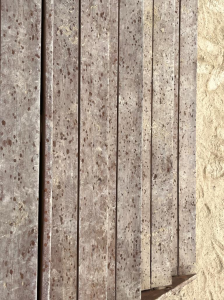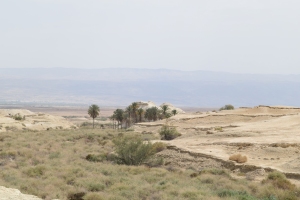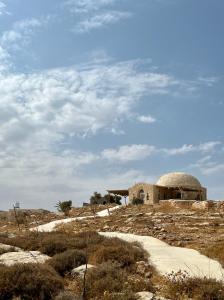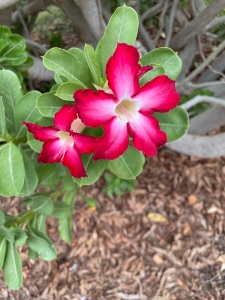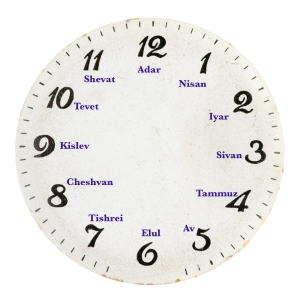Thus says Adonai: “A voice is heard in Ramah—lamentation and bitter weeping—Rachel weeping for her children, refusing to be comforted for her children, because they are no more.” (Jeremiah 31:15, TLV)
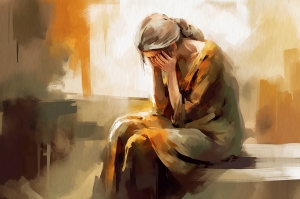 Today, Cheshvan 11th, is the yahrtzeit (remembrance of the day of one’s passing) of the matriarch Rachel. Whether or not Rachel actually passed on this date, the prophetic significance that Rachel represents is deeply tied into the themes of the eighth month, often dubbed the Month for Messiah. The eighth month is the only one that doesn’t have any Biblical or traditional holidays, but the new beginning significance of the number eight alludes to a future time when Messiah will inaugurate the third Temple. The first Temple was completed in the eighth month (1 Kings 6:38), but King Solomon waited almost an entire year later to dedicate it in the seventh month alongside the festival of Sukkot (1 Kings 8).
Today, Cheshvan 11th, is the yahrtzeit (remembrance of the day of one’s passing) of the matriarch Rachel. Whether or not Rachel actually passed on this date, the prophetic significance that Rachel represents is deeply tied into the themes of the eighth month, often dubbed the Month for Messiah. The eighth month is the only one that doesn’t have any Biblical or traditional holidays, but the new beginning significance of the number eight alludes to a future time when Messiah will inaugurate the third Temple. The first Temple was completed in the eighth month (1 Kings 6:38), but King Solomon waited almost an entire year later to dedicate it in the seventh month alongside the festival of Sukkot (1 Kings 8).
The Tabernacle and the Temple represent the indwelling Presence of Adonai, His people, and the Messiah – God tabernacling among, with, and in His people.[1] Jewish commentators glean this truth from Exodus 25:8,“And let them make a sanctuary for Me, that I may dwell in their midst. (LITV)” They see the eighth month as being reserved for the time of Messiah and His dedication of the third Temple. The exile will finally be over when Mashiach returns and restores all things (Acts 3:21). But what does any of this have to do with Rachel?
Joseph is arguably the most notable son of Jacob, as he was chosen to save the entire family (and future) of Israel, which prophetically figured the future salvation work of Yeshua. In fact, there numerous parallels between the lives of Joseph and Yeshua. Because of this, there is a common belief in Judaism that there is a Messiah ben (son of) Joseph and a Messiah ben David, the former coming as a suffering servant, and the latter as a conquering king. Christians have a similar understanding in the first and second coming of Messiah.
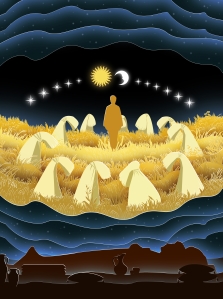 Rachel’s first born son Joseph was mockingly called the Ba’al HaChalomot, Master of Dreams, by his brothers. And due to their jealous animosity, Joseph became the first exile of Israel. This little nugget is important to remember. When Joseph was a young man, God gave him two dreams foretelling how in the future, he would rule over his brothers. In the first dream, Joseph and his brothers were symbolized by sheaves of wheat. When Joseph recounted the dream to his brothers, it ticked them off because they understood clearly what the dream meant. In his second dream, the sun, moon, and eleven stars bowed down to Joseph. Jacob understood that he was the sun, Rachel was the moon, and Joseph’s brothers were the stars. These dreams were part of the reason his brothers were envious of him. Soon afterwards, Jacob sent Joseph to check on his brothers while they were out shepherding sheep, and this is when they conspired at first to kill Joseph, but ended up putting him into a pit. Jacob, upon seeing the bloodied coat of Joseph that his brother’s used to deceive him, went into great mourning.
Rachel’s first born son Joseph was mockingly called the Ba’al HaChalomot, Master of Dreams, by his brothers. And due to their jealous animosity, Joseph became the first exile of Israel. This little nugget is important to remember. When Joseph was a young man, God gave him two dreams foretelling how in the future, he would rule over his brothers. In the first dream, Joseph and his brothers were symbolized by sheaves of wheat. When Joseph recounted the dream to his brothers, it ticked them off because they understood clearly what the dream meant. In his second dream, the sun, moon, and eleven stars bowed down to Joseph. Jacob understood that he was the sun, Rachel was the moon, and Joseph’s brothers were the stars. These dreams were part of the reason his brothers were envious of him. Soon afterwards, Jacob sent Joseph to check on his brothers while they were out shepherding sheep, and this is when they conspired at first to kill Joseph, but ended up putting him into a pit. Jacob, upon seeing the bloodied coat of Joseph that his brother’s used to deceive him, went into great mourning.
Jacob tore his clothing and put on sackcloth and mourned for his son many days. All his sons got up along with all his daughters to console him, but he refused to be comforted. He said, “For I will go down to Sheol to my son, mourning.” So his father kept weeping for him.” (Genesis 37:34-35, TLV)
Notice how the prophet Jeremiah sees Rachel doing the same thing, but not just for Joseph. She laments and weeps for his many descendants who had also been sent into exile.
Thus says Adonai: “A voice is heard in Ramah—lamentation and bitter weeping—Rachel weeping for her children, refusing to be comforted for her children, because they are no more.” (Jeremiah 31:15, TLV)
But there is a promise and exhortation that Adonai gives to Rachel.
Thus says Adonai: “Restrain your voice from weeping and your eyes from tears. For your work will be rewarded”—it is declaration of Adonai—“when they will return from the land of the enemy. So there is hope for your future”—it is declaration of Adonai—“when your children will return to their own territory.” (Jeremiah 31:16-17, TLV)
In Judaism, Cheshvan 11th has become a type of Jewish Mother’s Day. In a sense, all mother’s suffer pain and toil to birth and raise children. But, I find this Jewish Mother’s Day especially poignant, since there are so many grieving mothers in Israel due to the atrocious attacks of Hamas. Grace in Torah firmly stands with Israel and grieves with the many that have lost family and friends. I was in the Land on Simchat Torah when war broke out (more on that in Part II). I have a tiny inkling of what our Jewish brothers and sisters endure as they protect and fight for their inheritance. And whether Christians realize it or not, the Land IS one of the promises of the New Covenant, which goes back to the Covenant with Abraham.[2]
Mother Rachel’s Tears
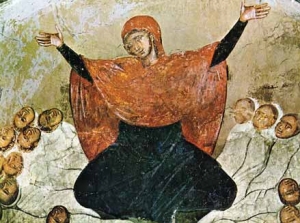
Unlike the other matriarchs and patriarchs, Rachel was not buried in Hebron at Machpelah. She is separated or exiled from Hebron and Machpelah (Cave of the Couples) despite it not being far from where she died. Why? If Rachel was the wife Jacob had intended to marry from the beginning, and she was the one he loved the most, why would she be buried on the side of road and not in the family grave site? Does this seem unnatural to you? In Jewish tradition, caring for the dead is the highest form of chesed, lovingkindness, because a dead person has no capability of returning the favor or paying one back. Caring for their body is a completely selfless act. If Jacob loved her so much, we must ask why she was buried where she was.
Perhaps Jacob knew something that we don’t easily see. God certainly chose Rachel, even after her death, to symbolize his mourning and deep desire for His wayward children to return to Him. Maybe Adonai allowed Jacob to see a glimpse of this, or maybe through Jacob’s grief He ensured that Rachel’s burial would be different. Rachel experienced “hard labor” and died giving birth to the final son of Jacob, Benjamin, on the Way to Ephrath (fruitfulness) near Bethlehem, the House of Bread. She called him Ben-oni, Son of My Sorrows, and Jacob changed his name to Ben-yamim, Son of my Right Hand. When Israel was finally able to enter the Promised Land, it occurred in the territory of Benjamin, who was the only son of Israel born in the Land.
Ema Rachel was “separated by her burial.” Why was she not “gathered to her people”? One might conclude that her incident of hiding her father’s idols under her saddle and saying she was on her “moon” cycle earned her death and separation, even in burial. If that is the case, Adonai still chose her to prophetically represent His deep longing for His wayward children to come home – children who had forsaken Him for the idols of their neighbors. Through the mouth of Jeremiah, Adonai proclaimed:
“Set up for yourself roadmarks, place for yourself guideposts; direct your mind to the highway, the way by which you went. Return, O virgin of Israel, return to these your cities. How long will you go here and there, O faithless daughter? For the LORD has created a new thing in the earth—A woman will encompass a man.” (Jeremiah 31:21-22, NASB)
Jeremiah spoke to people who were about to experience the judgment of Adonai that would result in their exile. Rachel’s tomb marks the place where the Babylonians marched the captives from the Land. But it is also the path one must take upon returning home. Separation, then gathering, renewal, and new life.
If one counts from the first day of the year (Tishrei 1) or Rosh Hashanah to Cheshvan 11, it equals forty-one. Forty-one is also the numerical value of אם (Em), which 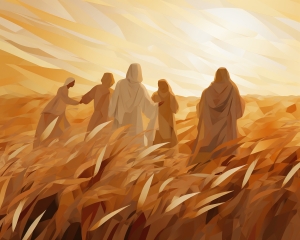 means “mother.” In Jeremiah, Mother Rachel prophetically weeps for her children who are “no more.” We also read this account in the haftarah portion on the second day of Rosh Hashanah (Jeremiah 31:1-19).
means “mother.” In Jeremiah, Mother Rachel prophetically weeps for her children who are “no more.” We also read this account in the haftarah portion on the second day of Rosh Hashanah (Jeremiah 31:1-19).
“At that time,” declares the LORD, “I will be the God of all the families of Israel, and they shall be My people.” (Jeremiah 31:1, NASB)
“With weeping they will come, and by supplication I will lead them; I will make them walk by streams of waters, on a straight path in which they will not stumble; for I am a father to Israel, and Ephraim is My firstborn.” (Jeremiah 31:9, NASB)
Weeping and mourning turning to laughter and rejoicing prophetically figures the restoration of all things. This is the theme of Jeremiah 31, which contains the prophecy of the new covenant. The Shabbat and festival Psalm read during the Birkat haMazon (Blessing After Meals) is Psalm 126. When you are full and satisfied (Dt. 8:10), remember that your work, toil, and pain will be rewarded. He is faithful. Returning exiles are “like dreamers,” who weep like mama Rachel, carrying their bags of seed. But they will return carrying their sheaves with them. They will rejoice in Simchat Torah. And the sheaves of Joseph’s dream will bow down to their Savior, but they won’t be alone. The first fruits guarantee that the whole field, the full harvest, is absolutely complete (Ezekiel 37:15-28, John 3:16, Romans 11).
Psalms 126:1-6 (NASB)
1 A Song of Ascents. When the LORD brought back the captive ones of Zion, we were like those who dream.
2 Then our mouth was filled with laughter and our tongue with joyful shouting; then they said among the nations, “The LORD has done great things for them.”
3 The LORD has done great things for us; we are glad.
4 Restore our captivity, O LORD, as the streams in the South.
5 Those who sow in tears shall reap with joyful shouting.
6 He who goes to and fro weeping, carrying his bag of seed, shall indeed come again with a shout of joy, bringing his sheaves with him.
The pattern of our complete redemption has been spoken from the Beginning. It will involve sorrow and trouble and hard birth pangs, but it will result with a celebration of the Son of the Right Hand, and great JOY.
Kever Rachel – Rachel’s Tomb
 In 2018, I had the opportunity to visit Kever Rachel (Rachel’s Tomb) near Bethlehem. Rachel means a “ewe,” a sheep, and yet she was the FIRST woman shepherdess mentioned in the Bible. Shepherds guard, protect, lead, water, and feed the flock – something the resurrected Messiah said was expected from those that love Him (John 21).
In 2018, I had the opportunity to visit Kever Rachel (Rachel’s Tomb) near Bethlehem. Rachel means a “ewe,” a sheep, and yet she was the FIRST woman shepherdess mentioned in the Bible. Shepherds guard, protect, lead, water, and feed the flock – something the resurrected Messiah said was expected from those that love Him (John 21).
Prophetically, Rachel symbolizes the Shekinah, the Divine Indwelling Presence[3], the Holy Spirit, Who, as Lady Wisdom, calls out to the wayward, lost, exiled, and bound children of Adonai. His desire is to release the prisoners, set the captives free, and bind up the broken hearted (Is. 61). And like a Mother Bird, He longs to gather them under His Wings. Rachel’s irregular burial “on the Way,” and her great pain, toil, and even death resulted with the last son, the Son of the Right Hand, who completed the House of Israel. This pattern points the Way back from the exile and to the restoration of all things (Acts 3:19-21).
Through the imagery of Rachel, God shows us labor pain, birth, death, wailing, mourning, and also great hope for the future. This is life in a nutshell. Rachel weeps, but she will be restored. Rather than being a symbol for death and separation, she pictures new life, repentance, reconciliation, and restoration. She is also connected to dreams and dreamers, the Bat Kol, Voice of God, the future, great joy, seeds growing into sheaves, laughter, prophecy, and Messiah. Most succinctly, she figures exile, redemption, and restoration. This story is told over and over through her life and in the lives of her children.
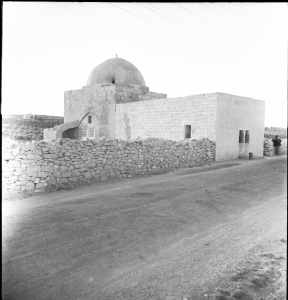 Rachel’s Tomb is considered the third most holy site in Israel. It once looked more like the first image in the photos below. Today, there is a winding paved road flanked by 50 foot concrete walls, dotted with IDF guard stations, that leads to the structure. These measures are in place to protect pilgrims from terror attacks from nearby Bethlehem, now an Arab city in the “West Bank.” The only indication that Rachel’s tomb looks anything like it did in the past, before all the security
Rachel’s Tomb is considered the third most holy site in Israel. It once looked more like the first image in the photos below. Today, there is a winding paved road flanked by 50 foot concrete walls, dotted with IDF guard stations, that leads to the structure. These measures are in place to protect pilgrims from terror attacks from nearby Bethlehem, now an Arab city in the “West Bank.” The only indication that Rachel’s tomb looks anything like it did in the past, before all the security
measures were built, is the interior limestone floors, walls, and domed ceiling.
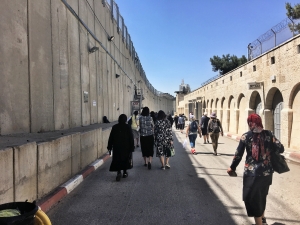 The winding drive was depressing and the entrance looked more prison like than a “holy” space. As we approached the entrance, the oppression was thick and heavy. It wasn’t what I expected. As I walked through the door, my sunglasses broke and fell off my face. I caught them in my hand as I crossed the threshold. Later, I would find that to be the perfect metaphor for my experience. Sometimes, we must remove the artificial lenses we have placed over our eyes because it is dimming our vision and blocking “the light.”
The winding drive was depressing and the entrance looked more prison like than a “holy” space. As we approached the entrance, the oppression was thick and heavy. It wasn’t what I expected. As I walked through the door, my sunglasses broke and fell off my face. I caught them in my hand as I crossed the threshold. Later, I would find that to be the perfect metaphor for my experience. Sometimes, we must remove the artificial lenses we have placed over our eyes because it is dimming our vision and blocking “the light.”
When I looked around, I was disappointed that there was nothing overtly “spiritual” about the place. Adonai had built Rachel up so strongly in my heart that I expected her to (figuratively) meet me there. But alas, all I sensed was heaviness, like the concrete barriers that surrounded everything around us. The men and women were separated, as is normal in Orthodox Jewish spaces. Both sides had many there praying, some very loudly, with wails reminiscent of Rachel weeping for her children. I wondered how many were there because they had lost children due to terror attacks, war, or some other tragedy, or who were dealing with the pain of barrenness. I took some photos and then prayed through my disappointment. “Abba, please show me what is here. I want to see.”
 As I opened my eyes after praying, I felt the Holy Spirit, and looked again. While in the natural everything was the same, I began to see the space with new eyes. The Holy Spirit had removed my natural lenses. The ancient limestone walls, shelves lined with prayer books, and the people remained. But, as I listened to the din of prayer by all those visiting, I noticed something that I failed to see before.
As I opened my eyes after praying, I felt the Holy Spirit, and looked again. While in the natural everything was the same, I began to see the space with new eyes. The Holy Spirit had removed my natural lenses. The ancient limestone walls, shelves lined with prayer books, and the people remained. But, as I listened to the din of prayer by all those visiting, I noticed something that I failed to see before.
Suddenly, it was all very apparent. First, there were so many women! So many PREGNANT women! Large bellies full of life, and the laughter and cries of little children echoing against the golden limestone walls. Whispered prayers, chanted prayers, and even loud wailing pleas clouded the air and created an incense that I couldn’t smell with my natural senses. It all coalesced into a spirit-filled cacophony that I was ashamed that I couldn’t detect previously.
I scanned the room and noticed pews filled with old women, long past child rearing years, who sat there praying for their children, grandchildren, and great grandchildren. Their plain clothes, covered heads, and wrinkled faces were like the epitome of every storybook old woman I’ve ever read about. Generations were represented in that place, and they all knew what and WHO “Rachel” represented. But, I was just opening my eyes like one of the newborns.
One particular old lady sat in the back. My mentor slowly walked towards me at that point and said, “If you give her some shekels, she will bless you.” I have no idea how she knew this would be the case, but already in awe of seeing with new eyes, I did what she suggested. I carefully made my way to the old woman while riffling through my pocket for coins. I reached out to the old Jewess and handed her some shekels. She looked up at me, not with contempt, judgment, or confusion (I am obviously of gentile descent), but with the tenderness of a loving mother or grandmother. She gently grabbed my hand and gave me a blessing in Hebrew. Though I could only make out a few words, my spirit resonated with them and I knew I had received a great honor. Then to my surprise, that old Jewess kissed the back of my hand with the softest lips I’ve ever felt. It was as if ema Rachel had kissed me herself. I was undone.
Overwhelmed, I slowly walked away, choked up by the flood of feeling and images that raced through my mind. I whispered to Adonai, “I get it! I see!”
Rachel is barren wombs who are now full of fruit.[4] She is idol worshipers turned and transformed into the image of Messiah.[5] She represents sacrifice and intercessory prayer. New life. Old life. Just LIFE. Cries, wails, despair and prayers, are exchanged for laughter and shouts of joy that echo throughout the centuries. Rachel died on the Way to Ephrat, fruitfulness. She is very near to the House of Bread – Bethlehem, the place the True Bread from Heaven was born. There is a reason she is not resting in Machpelah with the other patriarchs and matriarchs. She remains with her children in the exile, in their punishment and throughout their separation, calling loudly to them, crying for them to return.

Rachel exudes the love of our Father, whose holiness and righteousness requires justice; but like any good parent, hates to see us suffer all the same. And all the while, despite our treachery, unfaithfulness, and disrespect, His plan is to bring Israel back into His Bosom. And not just Israel, but the nations with them.[6] The prophets all proclaim this. The guilty will not go unpunished, and yet the chesed and mercy of Adonai abounds towards His people (Ex 34, Is. 54:8).
One night, before visiting Rachel’s Tomb, I had a very lucid dream about her. She was gripping metal birthing bars and was in the throes of labor. There were a few of us there who were like midwives and support. As her pains grew more intense, great drops of sweat ran down her face, thoroughly soaking her dark hair and clothing. As she screamed and pushed, her face would change. With one contraction she would be a woman, then the face of man, then the face of child. Many, many faces of all races and ages rippled to life as she travailed. Finally, she gave birth to a son, and he was half grown, the age of 7 or 8.
The dream was so real and graphic that I woke up in shock. It was later that I realized that Rachel is still giving birth, because that is what the Holy Spirit does, He grants us the spirit of repentance so we can accept Yeshua as our Messiah and Savior. Like Joseph’s multicolored tunic, they are from all walks of life and of all ages. He is the Savior of the whole world and He travails for us. And like her, we are meant to travail for the Kingdom too. Paul said, “My little children, for whom I am again in the pain of childbirth until Christ is formed in you,” (Galatians 4:19, NRSV)
 The “faces” are those who have grown from seeds scattered in exile among the nations. Our Father’s Word comes to pass even in our punishment for disobedience.[7] The harvest is ready, sheaves are being bound (for the LORD), and they will all bow down to him, and every tongue will confess. Some see the bloodied tunic and assume Joseph is “no more,” that the wild beasts of the world have torn him to pieces. They refuse to be comforted like Jacob and Rachel. They are wrong. He lives, even in Egypt, a place of exile.
The “faces” are those who have grown from seeds scattered in exile among the nations. Our Father’s Word comes to pass even in our punishment for disobedience.[7] The harvest is ready, sheaves are being bound (for the LORD), and they will all bow down to him, and every tongue will confess. Some see the bloodied tunic and assume Joseph is “no more,” that the wild beasts of the world have torn him to pieces. They refuse to be comforted like Jacob and Rachel. They are wrong. He lives, even in Egypt, a place of exile.
If you want to visit Rachel, know that the Way is narrow. It’s a tight place. A protected, restricted, and guarded path. It’s not easy to get there. Yet, Her birth pangs are steadily coming. Contraction after contraction. Wave after wave. Great streams of sweat and tears mar her face. But her work WILL be rewarded! And so will yours, son or daughter of Rachel!
In 2016, before my first trip to Israel, I “just so happened” to receive the following audio teaching from The Land of Israel (more about them and Arugot Farm in Part II). When Rabbi Katz sang the song that returning exiles, (Jews making Aliyah), are taught, I ugly cried, but it was a cry of joy and wonderment. I hope you will take the time to listen to this short message.
Can you hear Rachel calling for you to come home? Do you have ears to hear? She’s not in Hebron. She is not in Machpelah. She is on the Way waiting for you… Keep your eyes from weeping. Ask for new lenses. Adonai will provide them, even in the gloom and darkness of judgment and war.
Part II
PRAYER
Join me in prayer for Israel, Jerusalem, and all the men, women, and children who are standing firm set on protecting their inheritance from Adonai. For all those lost in the darkness of exile, bondage, captivity, spiritual darkness, and confusion. For all of our children, both physical and spiritual, and for prodigals to return home. Pray for blind eyes to be pierced by the light of Messiah, the suffering Servant, like Joseph, Who gave everything, even His life for the sheep. For all those entrenched in idol worship, like Laban, and the ancient House of Israel (Ephraim). Pray for our enemies near and far who are entrapped by fear and strong delusion making them sell themselves and their children to corrupt governments believing they are free when they are shackled to false ideologies. Pray for the lives of the unborn and all babies that are destroyed to satisfy the desires of greed, selfishness, hatred, and fear for the future. Pray for those who are sick and suffering, in pain, or who are isolated, estranged, or rejected.
May Adonai heal our land and restore our captivity. May He unify us in His love. May we cry so loudly that the Egyptians hear it when Joseph reveals himself and reunites the family of God.
For all these we pray. We wail and weep and cry out to the Most High, and He hears our prayers.
[1] Psalm 27:4, John 2:21, Romans 8:9, 1 Corinthians 3:16-17; 6:19-20, 2 Corinthians 6:16, Ephesians 2:20-22, Revelation 21-22.
[2] Genesis 12:1-9; 15:1-21, Jeremiah 31:31-40, Ezekiel 11:16-21; 36:24-38.
[3] While the word Shekinah does not appear in the Bible, the concept of the (in)Dwelling Presence of God certainly is. The verbal root of shekinah is sha-khan (H7931) meaning to abide, dwell, tabernacle, and lodge. It has always been the desire and will of Adonai to dwell with and in His people. Yeshua told His followers “to abide” in Him, the True Vine (John 15). Shakhan is also the root of the word Tabernacle, Miskhan, the place where the Presence of Adonai dwelled among His people in the wilderness, and later in the Temple. “And let them make a sanctuary for Me, that I may dwell in their midst.” (Exodus 25:8, LITV) Like Christians, Jews understand that the Tabernacle and Temple mystically figures God’s people (1 Cor. 3:16-17). What dwells in the Tabernacle or Temple? The Spirit of Adonai. In Hebrew, Ruach (Spirit) is a feminine word. When personified, the Spirit is expressed in the feminine form. A Biblical example is Woman/Lady Wisdom in the Book of Proverbs, Who was with God at the Creation. Shekinah is a feminine noun meaning, the “Abiding/Dwelling One.” Dr. Ben Gigi, a Jewish Believer and Hebrew teacher, explains Shekinah here: https://hebrew.jerusalemprayerteam.org/shekinah-divine-presence/
[4] “Shout for joy, O barren one, you who have borne no child; break forth into joyful shouting and cry aloud, you who have not travailed; for the sons of the desolate one will be more numerous than the sons of the married woman,” says the LORD. “Enlarge the place of your tent; stretch out the curtains of your dwellings, spare not; lengthen your cords and strengthen your pegs. For you will spread abroad to the right and to the left. And your descendants will possess nations and will resettle the desolate cities.” (Isaiah 54:1-3, NASB)
[5] “Or do you not know that the unrighteous will not inherit the kingdom of God? Do not be deceived; neither fornicators, nor idolaters, nor adulterers, nor effeminate, nor homosexuals, nor thieves, nor the covetous, nor drunkards, nor revilers, nor swindlers, will inherit the kingdom of God. Such were some of you; but you were washed, but you were sanctified, but you were justified in the name of the Lord Jesus Christ and in the Spirit of our God.” (1 Corinthians 6:9-11, NASB)
[6] Genesis 17:6,16; 35:10-12 Psalm 67; 86:9, Isaiah 2:2-5; 11:10; 19:16-25; 49:6; 60:1-22, Jeremiah 16:19-21, Micah 4:1-5, Zechariah 8:20-23, Romans 11:25-36, Ephesians 3:1-13, Revelation 5:9; 14:6-7, etc.
[7] Isaiah 55:9-11 (NASB) “For as the heavens are higher than the earth, So are My ways higher than your ways And My thoughts than your thoughts.
10 “For as the rain and the snow come down from heaven, And do not return there without watering the earth And making it bear and sprout, And furnishing seed to the sower and bread to the eater;
11 So will My word be which goes forth from My mouth; It will not return to Me empty, Without accomplishing what I desire, And without succeeding in the matter for which I sent it.

